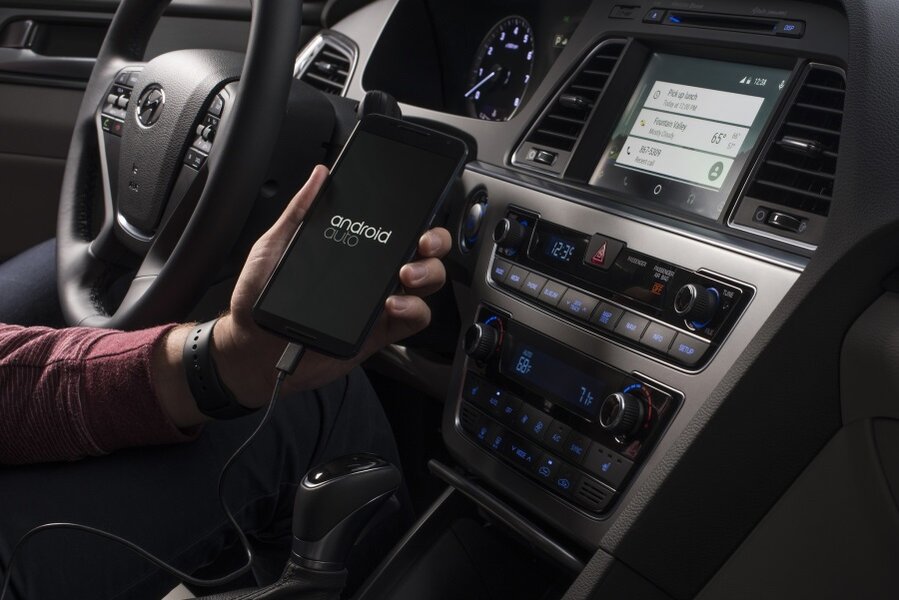Google and Hyundai team up for first new Android Auto car
Loading...
Android Auto, Google’s operating system for cars, began shipping in aftermarket kits in March, but this week, it finally hit new cars, as well. The 2015 Hyundai Sonata is the first car with built-in Android Auto, though the OS will be coming to other cars in the near future.
Android Auto lets a car connect to Android phones with a USB cable, and allows certain apps to run right through the car’s dashboard. Drivers can take a hands-free phone call, get Google Maps directions, or listen to music through Spotify or other audio apps, without having to touch the phone itself.
It’s worth noting that Android Auto doesn’t totally replace the Hyundai Sonata’s standard dashboard interface; it’s basically an app that launches automatically when a compatible Android phone (one running Android 5.0 Lollipop or higher) is connected. Since the Sonata already has microphones and buttons built in to the car, drivers can interact with Android Auto through voice commands or cabin controls.
Google put a number of restrictions on Android Auto to make sure that drivers don’t get distracted from watching the road. Once a phone is plugged in, all control is ceded to the car’s dashboard display, so you won’t be tempted to squint at the phone’s screen. App lists, such as lists of songs or playlists within the Spotify app, have a set maximum length so drivers can’t scroll endlessly. And notifications from Twitter, Facebook, Snapchat, and other social media sites won’t show up at all in Android Auto.
The operating system is generally built around voice search features, which are considered a safer way to interact with software while in the car since it doesn’t require you to take your eyes off the road at all. For example, Android Auto will read incoming text messages aloud and allow you to verbally dictate a response, but it won’t allow you to reread messages that have already been received.
Early reviews of Android Auto, or at least its current implementation in the Sonata, are positive. “I found Android Auto to be a much more pleasant experience than Hyundai’s native system,” Dan Seifert wrote for The Verge. “It’s faster, gives me access to the same maps and music I use on my phone, and is just more pleasant and familiar to use. If I owned the Sonata, I can’t think of a reason why I’d use the native UI instead of Android Auto.”
The Wall Street Journal’s Joanna Stern praised the Google Maps implementation: “Thanks to Android Auto’s integration with Google Now, the next appointment in my Google calendar or the address of a recent search automatically popped up on the Android Auto home screen when I got into the car. I was amazed at just how well the system kept predicting where I was going next.”
People who already own a 2015 Hyundai Sonata can take the car in to the dealership to receive a software update enabling Android Auto. Hyundai says it will also release a downloadable update later this summer that people can load onto their cars via USB.








